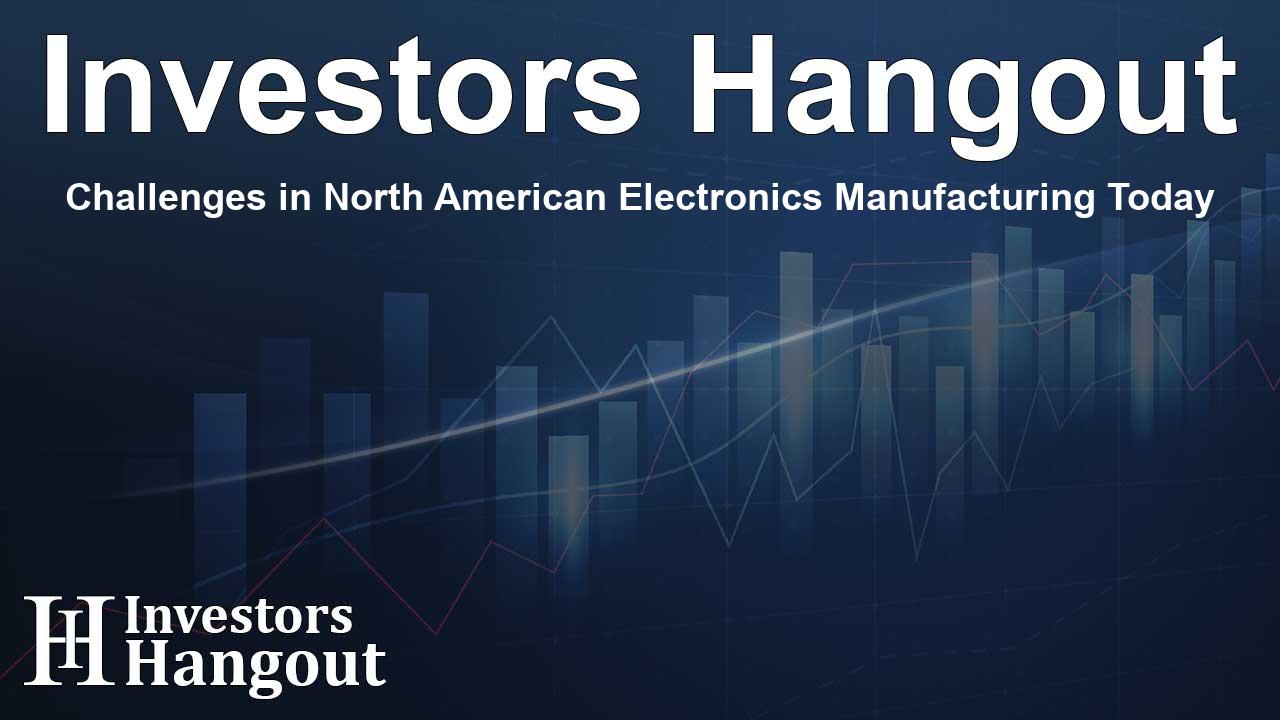Challenges in North American Electronics Manufacturing Today

Navigating the New Landscape of North American Manufacturing
In response to growing tariff concerns, electronics manufacturing services (EMS) providers are ramping up production efforts across North America. However, industry insiders warn that persistent component shortages and limitations within US chip plants may hinder the development of the AI server market for several years to come.
The Shift in Manufacturing Focus
The momentum of relocating manufacturing facilities to the US has increased recently. Notable players in the industry, such as Wistron, are planning new facilities in the United States, bolstered by recent capital investments. Meanwhile, Compal is expanding its automotive electronics plant, and Foxconn is enhancing its operations in Houston to keep pace with the rising demand for server production.
Challenges in Build Times
Building new manufacturing facilities in the US presents its own set of challenges. Analysts indicate that constructing an EMS factory typically takes about a year in Asia, whereas it can require between 1.5 to 2 years in the United States. The disparity is exacerbated by significantly higher labor costs, which compel companies to focus more on producing higher-margin products to remain profitable.
Establishing a Global Manufacturing Network
Leading EMS providers are creating strategic manufacturing hubs across vital markets such as the US, China, the EU, Southeast Asia, India, and non-Mexican Latin America. The ability to relocate assembly lines to populous areas is relatively manageable. However, a significant challenge remains: dispersing essential components such as PCBs, semiconductors, and various mechanical parts effectively across these locations.
Singapore: A Rising Assembly Hub
Singapore is emerging as a pivotal center for server assembly, offering a favorable 10% tariff rate. Foxconn operates several facilities there, utilizing free trade agreements within ASEAN. This enables the import of components from countries like Vietnam and the Philippines, before final assembly and export are completed.
Component Shortages and Their Impact
Over the next few years, the AI server sector is anticipated to encounter two significant bottlenecks: the capacity of TSMC's Arizona factory and the availability of domestic high-bandwidth memory (HBM) production. Analysts assert that TSMC's Arizona facility lacks the capacity to satisfy demand should major companies—such as Nvidia, AMD, and Apple—redirect their orders there to evade tariffs. With a monthly output of only 10,000 12-inch wafers, an imbalance arises as US plants become oversubscribed, while Taiwanese facilities potentially face excess capacity.
Memory Production Constraints
The landscape for memory production also presents constraints. Out of an expected 1.5 million HBM chips to be manufactured in a given period, Micron is projected to produce around 340,000, with about half coming from US factories. The rest is chiefly handled by Samsung and SK Hynix, both of which predominantly operate in South Korea. This production level falls considerably short of fulfilling Nvidia's GPU needs.
Market Dynamics and Future Trends
The ongoing component shortages may lead to a divided market, where identical products are sold under different pricing structures. Analysts anticipate that Nvidia's AI accelerator cards, for example, will have two distinct cost bases—one for units made with US components and another for those produced abroad under additional tariffs. Since companies cannot offer the same product at two separate price points, the average costs are likely to escalate.
This scenario could stifle demand for AI servers, especially among small and medium-sized enterprises that operate within tighter budgetary constraints. Higher prices may push potential clients to reconsider or postpone their purchases unless exemptions from tariffs can be negotiated.
Frequently Asked Questions
What is driving the shift towards North American manufacturing?
Growing tariff concerns and the need for strategic production locations are key factors, prompting EMS providers to increase their presence in North America.
How do labor costs in the US compare to Asia?
Labor costs in the US are significantly higher, which affects production priorities towards more profitable products.
Which countries are emerging as new manufacturing hubs?
Countries like Singapore are becoming important assembly hubs, thanks to favorable trade terms and lower tariffs.
What challenges face the AI server market?
Component shortages and insufficient production capacities at domestic plants are major hurdles for the AI server market's growth.
How might pricing dynamics change due to manufacturing constraints?
We could see different pricing for the same products depending on whether they are manufactured in the US or abroad, likely leading to overall higher prices.
About The Author
Contact Riley Hayes privately here. Or send an email with ATTN: Riley Hayes as the subject to contact@investorshangout.com.
About Investors Hangout
Investors Hangout is a leading online stock forum for financial discussion and learning, offering a wide range of free tools and resources. It draws in traders of all levels, who exchange market knowledge, investigate trading tactics, and keep an eye on industry developments in real time. Featuring financial articles, stock message boards, quotes, charts, company profiles, and live news updates. Through cooperative learning and a wealth of informational resources, it helps users from novices creating their first portfolios to experts honing their techniques. Join Investors Hangout today: https://investorshangout.com/
The content of this article is based on factual, publicly available information and does not represent legal, financial, or investment advice. Investors Hangout does not offer financial advice, and the author is not a licensed financial advisor. Consult a qualified advisor before making any financial or investment decisions based on this article. This article should not be considered advice to purchase, sell, or hold any securities or other investments. If any of the material provided here is inaccurate, please contact us for corrections.
